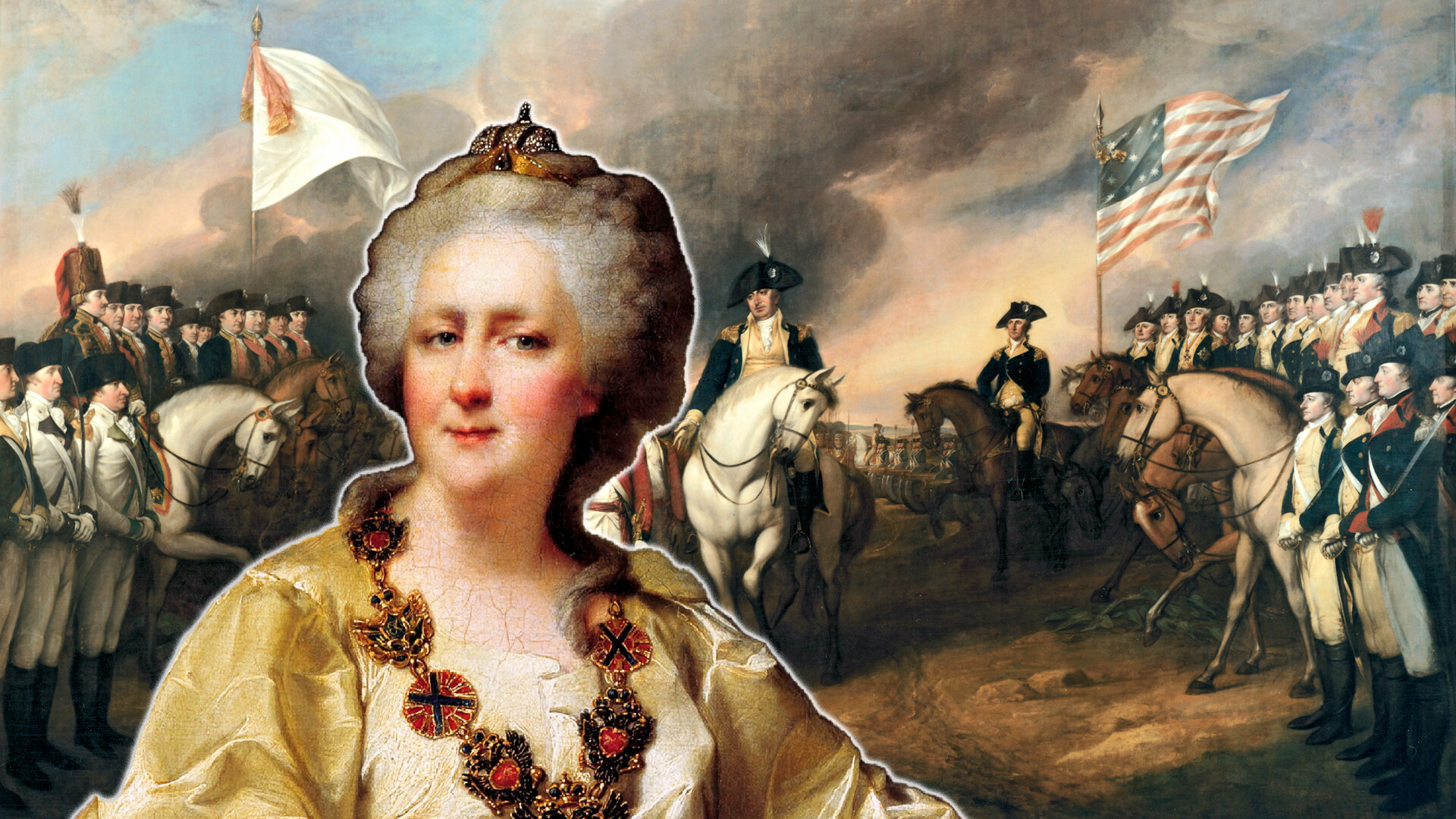
If you have seen Tim Burton’s ‘Sleepy Hollow’ (1999), you will, of course, remember the most colorful character in this cult movie - the gruesome ‘Headless Horseman’ played by Christopher Walken. According to the plot, he was one of the Hessian auxiliaries whom Britain brought in to suppress the rebellion in its North American colonies in 1776. At that time, the Landgraviate of Hesse-Kassel would willingly lend its soldiers to various rulers and states for an agreed fee.
It is curious that a Russian grenadier could well have taken the place of the German auxiliary in the movie. After all, before approaching the Landgrave of Hesse-Kassel, King George III of Great Britain had asked Empress Catherine II for military assistance.

King George III of Britain.
Birmingham Museum of Art/Public DomainBy the Summer of 1775, the British realized they were being dragged into a major war in North America, requiring a lot of manpower. But there was a catastrophic shortage of ‘Redcoats’ - the ‘Mistress of the Sea’ had always relied on her navy and had a relatively small land army, scattered around garrisons from Ireland to Africa and the Caribbean Islands.
London decided to seek additional troops from Russia for a number of reasons. Less than a year had passed since the conclusion of the Russians’ victorious war of 1768-1774 against the Turks and the Russian army, which had brilliantly proved its worth in the war, retained its high numerical strength and fighting spirit.
The great geostrategic confrontation between the British and Russian empires, known as the ‘Great Game’, was still a long way off and the two powers enjoyed quite cordial relations. The British had even supported the Russians in their war against the Ottoman Empire and now hoped for a gesture of gratitude.
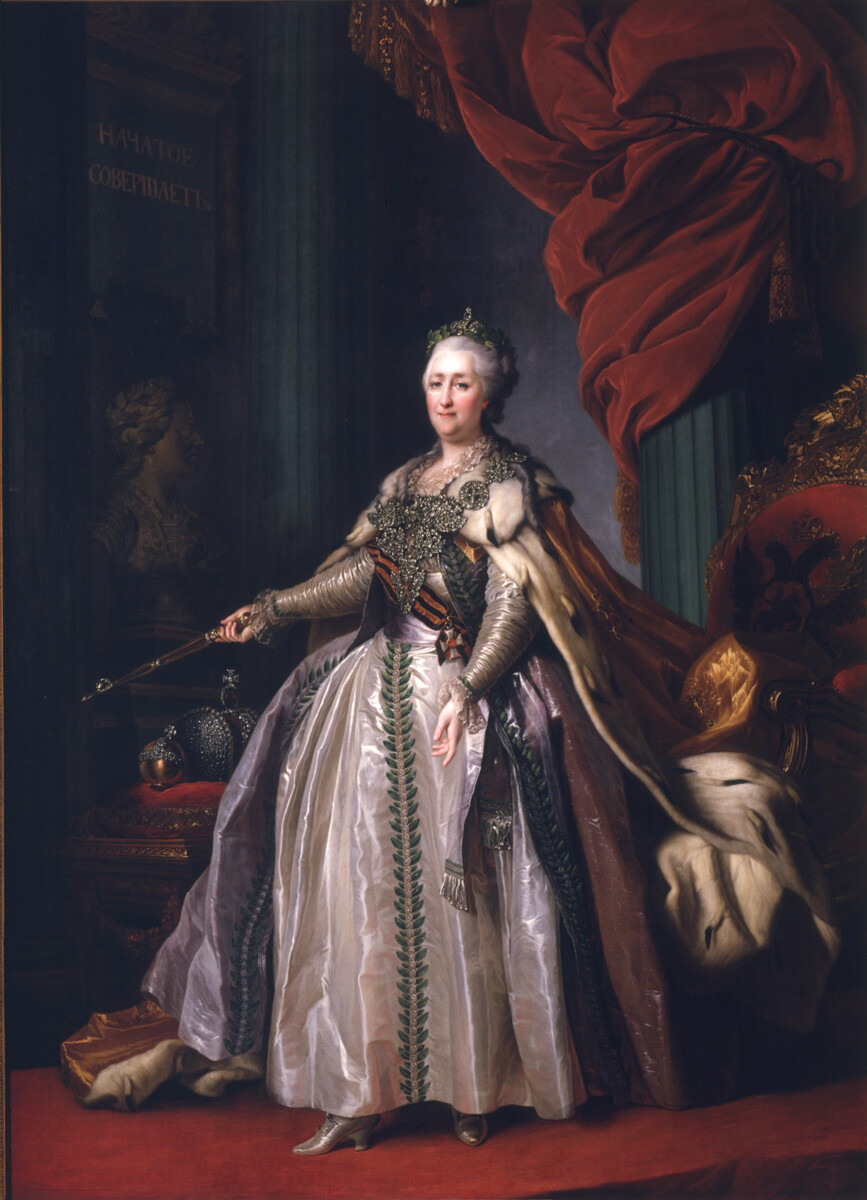
Empress Catherine II.
Public DomainFinally, George III knew how sensitive Catherine the Great was about challenges to monarchical authority. The empress had just crushed the large-scale Cossack and peasant uprising led by Yemelyan Pugachev and the King hoped that she would not abandon her “brother” to a similar predicament.
In June 1775, the British Ambassador Robert Gunning cautiously began to test the waters to find out whether the British could find support in Russia for crushing the rebellion and was encouraged by the response he received from Nikita Panin, the head of Russian foreign policy. Panin assured the ambassador of the empress’ wholehearted readiness “to give his Majesty every assistance he should desire and in whatever mode or manner he thought proper”.
In the fall, Gunning received more detailed instructions from London. In his letter to the ambassador dated September 1, Secretary of State for the Northern Department Henry Howard, 12th Earl of Suffolk, asked him to communicate to the Russian Empress that “the assistance requested, is wished, to consist of 20,0000 disciplined infantry, completely equipped (except only their field pieces) and ready to embark as soon as the Baltic navigation opens in the spring, aboard transports which will be sent from hence and, thence, to sail with the greatest part of the troops to Canada, to be under the command of the British commander in chief”.
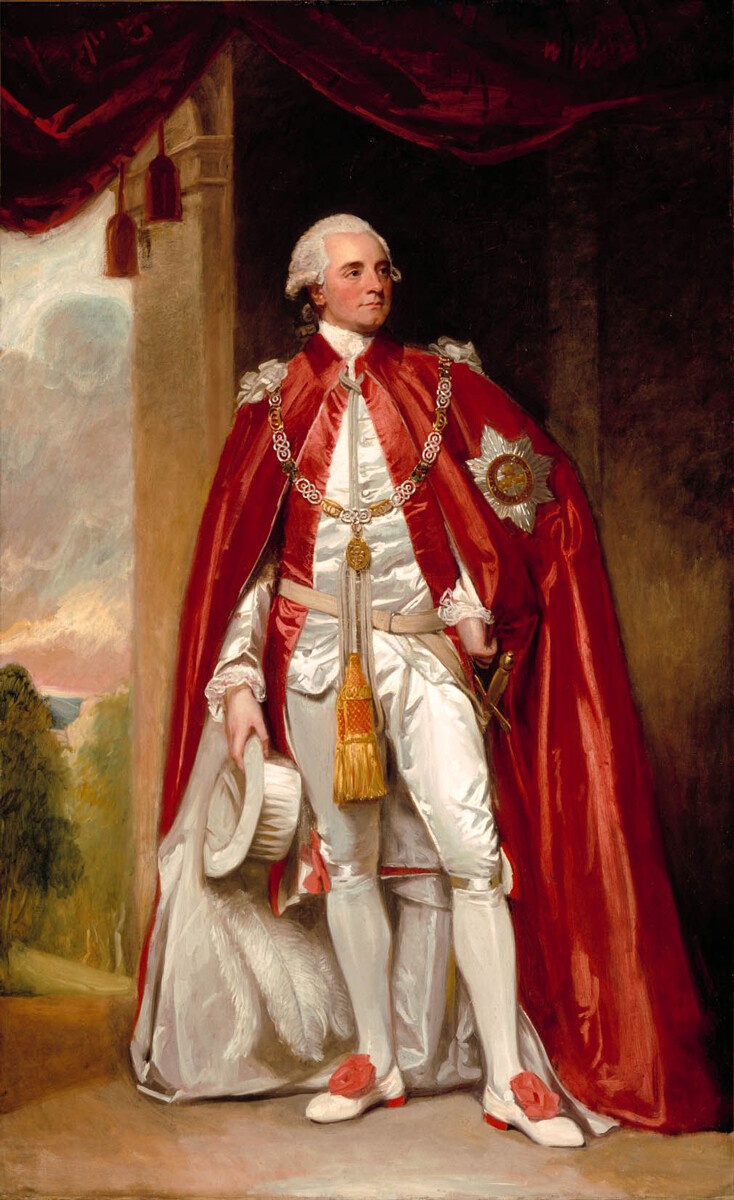
Robert Gunning.
Public DomainIn addition, Gunning received a letter from the King addressed to Catherine II. In it, George III expressed his gratitude to the empress and presented things as if she had come up with the idea of sending Russian soldiers to another continent: “I accept the assistance of a certain part of your troops as you have proposed, which might regrettably be rendered necessary as a consequence of acts of rebellion by my subjects in certain of my colonies in America.”
The involvement of Russian troops would naturally have to be paid for and it was proposed to discuss the price at the next stage of talks. As it soon turned out, however, the Russian ruler’s promises to provide “every assistance” to the British was interpreted by them somewhat incorrectly.
Catherine II was following developments in North America closely. Although she brooked no challenges to monarchical authority, she saw a big difference between Pugachev and the rebel colonists. Whereas the former had overtly pretended to the throne, claiming to be Emperor Peter III of Russia who had miraculously survived (Peter III was deposed by Catherine in a coup in 1762 and died in mysterious circumstances soon afterwards), the latter posed no threat to King George himself or the ruling dynasty.
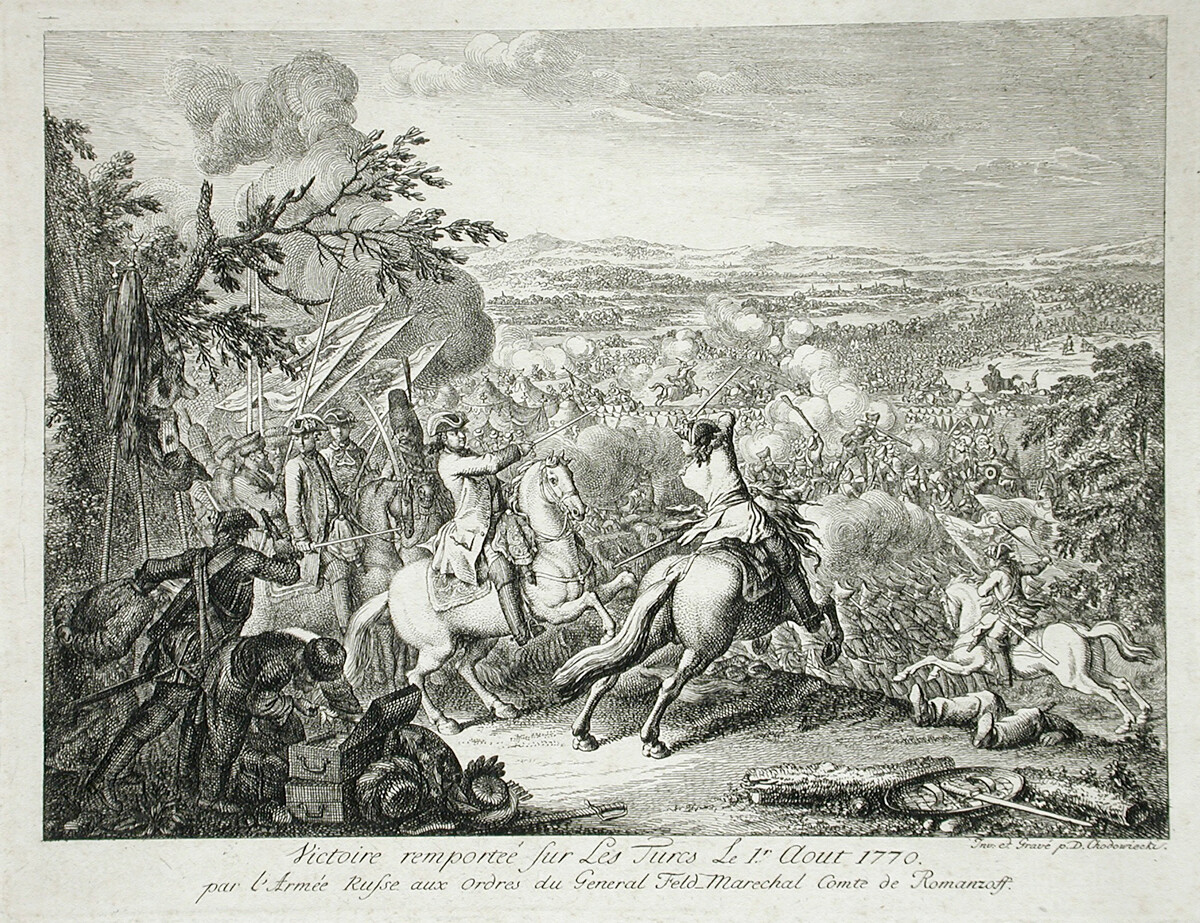
Battle of Kagul during the Russo-Turkish War of 1768–1774.
Los Angeles County Museum of Art/Public DomainThe empress was certain that Britain would become a significant geopolitical rival to Russia in the future and the more it got bogged down in North American events now and the more it was weakened, the better it was for Russia. She had no desire for Russian soldiers to pay with their blood to help London to sort out its colonial problems. Even if it was willing to pay handsomely for this blood.
It was also important to consider how the leading European powers, who were by now well aware of the British requests, would react to the dispatch of an expeditionary force. And, finally, the difficult war against the Turks and the crippling Pugachev Rebellion had left their scars on Russia and the country needed a respite.
“I am only just starting to enjoy the peace and Your Majesty will know that my empire needs repose,” the empress told George III in reply. “You will also know in what condition the army is emerging, albeit victoriously, from a long and bitter war in a punishing climate. I have to confess to you first of all that the period from the present time to the spring is too short even to give my troops a chance to recuperate from the labors they have performed and for measures to be taken to reorganize them properly. Also, without dwelling on the inconveniences that would arise if such a substantial corps were to be deployed in another hemisphere where it would find itself under an authority with which it was almost completely unfamiliar and where it would be almost totally deprived of contact with its monarch, my own belief in peace, which has cost me such efforts, positively forbids me to deprive myself of a significant part of my troops at such short notice…”
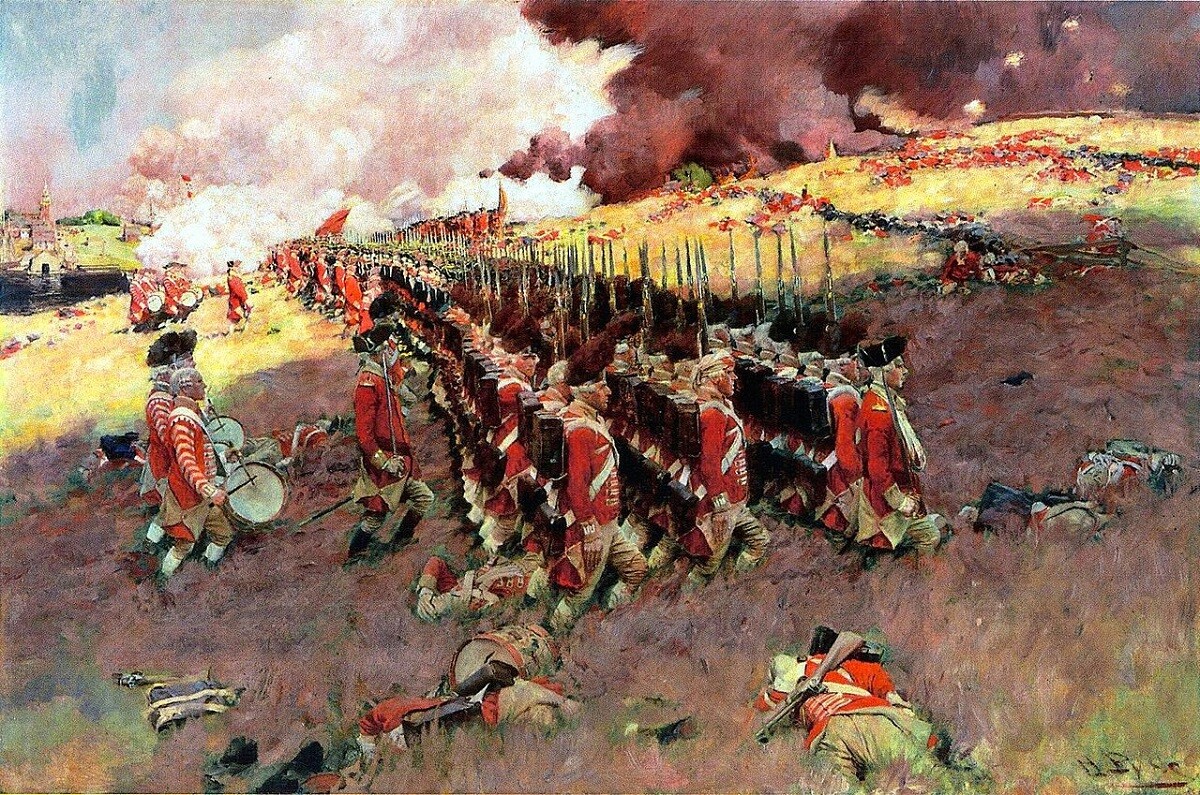
Battle of Bunker Hill.
Delaware Art MuseumAs an alternative solution, the British were offered the option of Russian troops being sent to the defense of Hanover (George’s ancestral possession on the continent), thus allowing Hanoverian forces to be deployed to America. Such a plan did not suit London, however. The disheartened Gunning resigned after the failure of his mission in St. Petersburg and British diplomats were dispatched with haste to Hesse to seek soldiers there.
Even after everything that had happened, the British did not rule Russian troops out of their plans. In 1777, the commander-in-chief of British land forces in North America, Lord William Howe, irritated at the insufficient reinforcements being received from Europe, wrote that a corps of 10,000 battle-ready Russian soldiers “would ensure the success of the war” for Britain.
London approached Catherine II several more times asking for military assistance, but, each time, was met with a refusal on various pretexts. “We are not a little pleased to find from good authority that the sollicitations and offers of the Court of Great Britain to the Empress of Russia, have been rejected with disdain,” wrote the first president of the U.S. George Washington to his French brother-in-arms, Gilbert Lafayette.
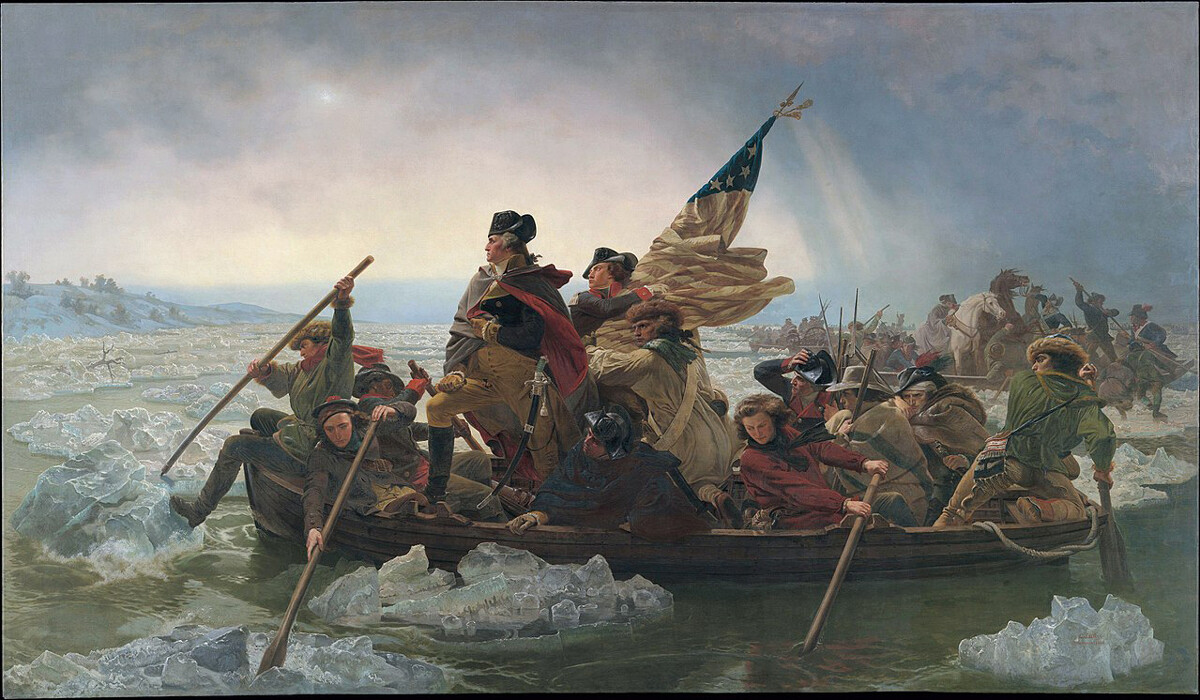
Washington crossing the Delaware.
Metropolitan Museum of ArtIn 1780, Russia issued a declaration of armed neutrality that enabled states that were not involved in the conflict to trade freely with any of the belligerents. Russia was soon joined by the Netherlands, Sweden, Denmark, Austria, Prussia and Portugal. Britain treated this as an unfriendly act.
Being the cautious and pragmatic politician that she was, Catherine II did not rush to recognize the independence of the U.S., despite the fact that her sympathies in the conflict lay with the colonists. Diplomatic relations between the two states were only established in 1809 during the rule of the empress’ favorite grandson, Alexander I.
If using any of Russia Beyond's content, partly or in full, always provide an active hyperlink to the original material.
Subscribe
to our newsletter!
Get the week's best stories straight to your inbox